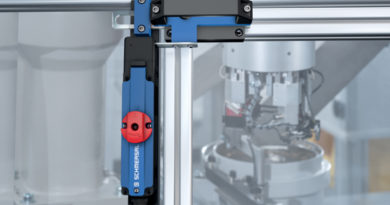The Rise of Smart Machinery and Servitization
Recent years have witnessed a significant integration between operational technologies and IT, transforming modern machinery into smart, interconnected components within entire production systems. This evolution has greatly enhanced industrial assets, now encompassing not only physical machinery but also the valuable data they generate.
Servitization in the B2C Sector
In the B2C sector, servitization is well-established, with consumers now accustomed to monthly payments for both products and services. Examples include leasing copiers or Haier’s WashPass pay-per-use washing machine model. This transition to offering a product as a service relies heavily on data. Connected machinery provides continuous data streams, enabling suppliers to measure actual product usage and thus transform a tangible asset into a valued service.
Business Model Innovation
The shift to a service-oriented sales strategy seems inevitable, often prevailing as the simplest solution. Disruptive business models have historically changed market dynamics, such as Netflix surpassing Blockbuster and Kodak losing its market dominance due to strategic myopia. While servitization in the B2B market may not cause such market imbalances, it certainly introduces a new strategy with transformative potential.
Many companies have successfully leveraged shifts in consumer mindset. In the manufacturing sector, signs of a paradigm shift are increasingly evident. Entrepreneurs are integrating digital technologies into their machines, shifting from selling mere products to offering productivity solutions. This reflects a profound transformation, focusing on continuous value generation and improved operational efficiency for customers.
What is Servitization? (exorint.com)
Servitization in the B2B World
While renting is well-established in the consumer world, there is still resistance in the industrial sector. Servitization means transitioning from purchasing a physical asset to using it, with productive capacity as the valuation metric. An example is Rolls-Royce aircraft engines, where guaranteed flight hours are purchased, ensured by the manufacturer’s efficiency and maintenance.
The servitization process is closely linked to digitalization, essential for remotely monitoring and managing machines, optimizing their use, and integrating additional services.
Servitization revolutionizes the traditional sales model: you no longer buy the asset, but its productive potential.
Rolls-Royce’s Transformation through Servitization
The servitization process has led Rolls-Royce to deeply review its organizational structure. A key change was the introduction of the Blue Data Thread digital platform, which collects and analyzes engine performance data in real-time. This platform enhances predictive maintenance services, ensuring operational efficiency for customers.
Blue Data Thread connects every Rolls-Royce engine with airline operations, maintenance workshops, and production factories. Bidirectional data collection includes monitoring engine health, real-time flight conditions, and maintenance data. Predictive maintenance algorithms allow precise predictions of maintenance times, reducing unplanned operations and increasing engine utilization time, thus reducing operational costs for airlines.
Conclusions
Servitization revolutionizes how industrial products are conceived and marketed. By shifting focus from selling physical goods to providing data- and performance-based services, companies can offer greater continuous value to customers. Rolls-Royce’s transformation exemplifies this: through digital platforms and innovative business models, operational efficiency is improved, and costs are reduced. In an evolving market, embracing servitization is essential to remain competitive and meet the new demands of consumers and companies.



